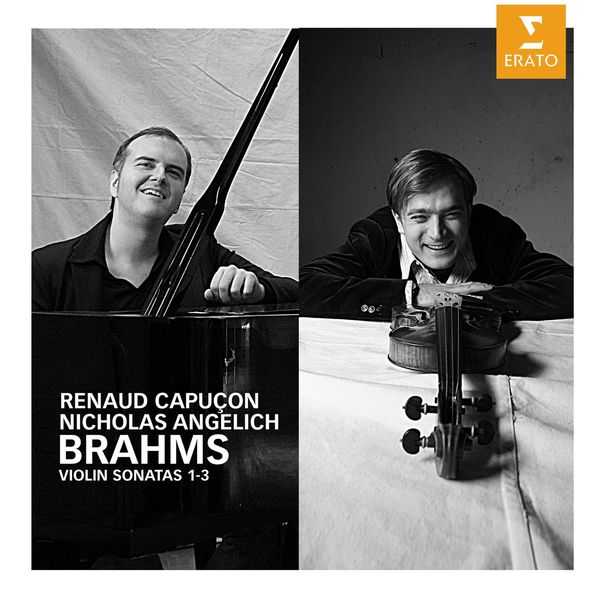
Composer: Johannes Brahms
Performer: Nicholas Angelich, Renaud Capuçon
Format: FLAC (tracks)
Label: Erato
Catalogue: 5457312
Release: 2005
Size: 267 MB
Recovery: +3%
Scan: cover
Violin Sonata No. 1 in G major, Op. 78
01. I. Vivace ma non troppo
02. II. Adagio
03. III. Allegro molto moderato
Violin Sonata No. 2 in A major, Op. 100
04. I. Allegro amabile
05. II. Andante tranquillo – Vivace – Andante – Vivace di più – Andante – Vivace
06. III. Allegretto grazioso (quasi andante)
Violin Sonata No. 3 in D minor, Op. 108
07. I. Allegro
08. II. Adagio
09. III. Un poco presto e con sentimento
10. IV. Presto agitato
11. Sonata Movement in C Minor (Scherzo) from the FAE Sonata
Is this what Gallic Brahms sounds like? Well, violinist Renaud Capuçon is French-born and French-trained, and pianist Nicholas Angelich, while America-born, is French-trained, but does this make them French musicians rather than musicians who are French? Possibly: Capuçon has the lean, lyrical tone that has been the specialty of French violinists since Louis Capet and Angelich has the lush, lucid tone that has been the specialty of French pianists since Walter Gieseking. But does that make Capuçon and Angelich’s Brahms sonatas sound Gallic anymore than Oistrakh and Richter’s Brahms sonatas sound Russian? Probably: Capuçon and Angelich’s performances are more about the melody and the rhythm than about the harmony and structure, more about the players’ relationship than about the music, more about getting there than being there. Are there French qualities? Surely: try to imagine Klemperer caring more about melody than harmony or Furtwängler caring more about getting there than being there. Still, for Gallic Brahms, these are lovely and powerful performances that will thrill listeners who love these works, whoever is performing them. Virgin’s sound is cool but clear, vivid but reserved, an acoustic that suits the performers admirably.
Capuçon and Angelich make a wonderfully well-matched team, with a command of genuine rubato (pressing forward in order to make room for subsequent holding back) that gives a truly authentic impression. Each detail of the music is expressively convincing: it seems that it’s a priority for Angelich and Capuçon to feel the music. This can lead them sometimes to go against Brahms’s expressed intentions. The theme at 3’18” in the first movement of Op 78 is marked to be in tempo (after a ritardando) but here the speed suddenly becomes faster, the dynamic much louder than the written pianissimo.
Similarly, in the Presto agitato finale of Op 108 the quieter passages are taken more slowly.
These are occasional lapses: overall the performances are beautifully considered, tending towards an expansive, romantic view of Brahms, but with a care for balance and proportion. The FAE Scherzo, for example, has all the necessary youthful exuberance, but it’s coupled with a fine feeling for balance between the parts and for rhythmic character. And, throughout, there’s a magnificent sense of line: Capuçon plays the great G-string melodies in Op 108’s Adagio and Op 100’s finale with rich, opulent sound but his vibrato is never too prominent – the most important thing is the shape of the melody.



